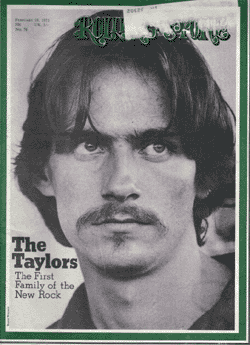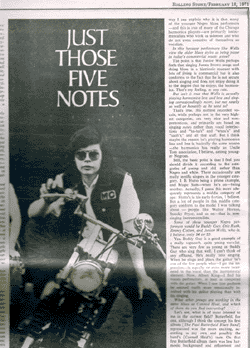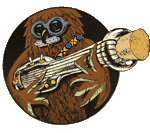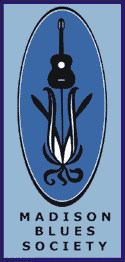|
Just Those Five Notes: An interview by Pete Welding
 To those fortunate enough to have known him, a conversation with the late Al Wilson could be a stimulating experience. While best known as Canned Heat’s rhythm guitarist, harmonica player, chief arranger-composer and occasional (but always completely satisfying) vocalist. Alan was a keen and perceptive student of the blues whose comments on the music, its stylistic development and esthetics were always penetrating and full of insight. The illuminate, for example his meticulous, extensively documented musicological studies of country bluesman Son House and Robert Pete Williams, which must stand among the finest products of recent folksong scholarship. And too, they reveal Alan’s deep compassionate concern with the people behind the music. He was above all, a humanist. To those fortunate enough to have known him, a conversation with the late Al Wilson could be a stimulating experience. While best known as Canned Heat’s rhythm guitarist, harmonica player, chief arranger-composer and occasional (but always completely satisfying) vocalist. Alan was a keen and perceptive student of the blues whose comments on the music, its stylistic development and esthetics were always penetrating and full of insight. The illuminate, for example his meticulous, extensively documented musicological studies of country bluesman Son House and Robert Pete Williams, which must stand among the finest products of recent folksong scholarship. And too, they reveal Alan’s deep compassionate concern with the people behind the music. He was above all, a humanist.
Nor were his activities confined solely to the blues, for his interests ranged extensively and selectively though all music. Alan was as keenly involved with Indian music, which he studied closely, as he was with western classical disciplines. More often not when the two of us, nominally blues freaks, got together we’d spend the evening listening to keyboard music of Bach, Purcell, Scarlatti or the like. Invariably Al’s comments on the music were revelatory, opening up new ways of listening to it – no matter how familiar with it one might have been. To know him was to have one’s horizons continually broadened.
The Remarks that follow were taped shortly after Canned Heat has earned its reputation as one of the stronger, more creative bands to emerge from the blues revival, following the release of its second Liberty album and singles success with it’s version of “On The Road Again.” Alan’s comments clearly reveal the depth and penetration of his thinking about the blues and its means; the precision with which he voices his thoughts about the music and it’s performers is typically striking in it’s tough-mindedness and not a little remarkable in that it emerged conversationally as the interview proceeded. He spoke as he thought – with clarity, thoughtfulness and insight – and will be sorely missed, particularly by his friends, to whom he gave so much of himself. –P.W.
* * *
Do you see the recent interest in blues increasing and creating a sizeable audience for the music, even though you can see the possibility of its dying out within a year or two?
Yes. After the full flush of the boom – or I guess boomlet would be a better term – for the blues, I can see more people remaining interested after the craze dies down than would be the case with someone like Fabian, particularly because the blues groups like Cream and Jimi Hendrix share one similarity in that singles success is next to nonexistent and album sales are paramount. People who pay four dollars for a record are a little more likely to maintain a continuing interest; they have more definite commitments than do the singles buyers. So I can see, for instance, in Paul Butterfield’s case at least, that after the boomlet is over the price he could command would probably go down but he would be able to work indefinitely, at least sustaining wages, into the far future.
Do you feel the blues boom will generate work for the Negro bluesmen?
I fear not, but I hope I’m wrong. Even a lot of people I consider as knowledgeable listeners who go to college concerts and clubs to hear blues are nonetheless primarily interested in young white bands. It would seem logical, and one would hope at least, that this interest would extend to similar sounds produced by Negro bands. But for, I guess, ultimately cultural reasons – it’s the identification process – they identify with white bands much more readily. And though a lot of these people have a real taste for the blues, they don’t seem to acquire interest in the Negro bands.
Have you encountered any static or hostility from any of the Negro Bands you’ve met on the road? What has been their reaction?
No, no static: not yet. I think some of them have been interested in us. Jimmy Cotton, when he met us, was surprised. The thing that surprised him was that we were still – although he wouldn’t use these words – doing all that modal-type stuff, which of course relates to an older form of the blues. When he heard us, he said that he liked us because we were not going down certain byways which, ironically, I think maybe he himself goes down in an attempt to broaden his commercial appeal. I also find that most of the older performers have listened to this music enough so that they are somewhat aware of what’s gone on with the younger musicians and usually find one or two individuals they like. For instance, George Smith, who’s a really terrific harmonica player who lives in Los Angeles, is familiar with Butterfield’s playing and rates it in the very highest category of harmonica playing, irrespective of any racial or age factors.
One thing I would like to say – this is a personal feeling – about categorization: you can see two categories in today’s market but I don’t believe the distinction should primarily be made on racial lines; I think it should be drawn on age. Because younger Negro performers and groups – I’m thinking of people like Junior Wells – have interesting similarities with problems and tendencies shown by young white groups, the chief of which is a greater reliance upon and an expertise in the instrumental aspect and a lessening of the vocal ability, as compared with the older blues styles.
Wells, for instance, plays harmonica excellently but doesn’t sing well, in fact, this is not just my own personal opinion; it’s something I’ve read in print often, so apparently it’s a common feeling. I think that Junior Wells is very interested in playing the harmonica but on vocals seems to suffer from an analogous set of sociological problems as those experienced by the white blues performer. Basically it is this: If he were to get up and sing in a more traditional way, he might get off the stand and his friends would come up, stop him, and say, “Boy, you’re really doing some of that real old Uncle Tom stuff, man.” And I Think this is a factor: it’s a similar set of sociological problems. Anyway, that’s the only way I can explain why it is that many of the younger Negro blues performers – and this is true of many of the Chicago harmonica players – are primarily instrumentalists who work as sidemen and who do not even conceive of themselves as vocalists.
Is this because performers like Wells view the older blues styles as being passé in today’s commercial music scene?
The point is that Junior Wells perhaps feels that singing James Brown Songs and doing blues in a historic manner with lots of jiving is commercial but it also conforms to the fact that he is not secure about singing and does not enjoy doing it to the degree that he enjoys the harmonica. That’s my feeling at any rate.
But isn’t it true that Wells is actually playing harmonica less and less and singing correspondingly more, but not nearly so well or honestly as he used to?
That’s true. His earliest recorded vocals, while perhaps not in the very highest categories, are very nice and non-pretentious, and are primarily based on singing notes rather than vocal interjections and “ha-ha’s” and “whoa’s” and “aaah’s,” and all that stuff. But I think maybe the reason he’s playing harmonica less and less is basically the same reason – the harmonica has really an Uncle Tom association, I believe, among younger Negroes.
Still, the basic point is that I feel you should divide it according to the categories of young and old, rather than Negro and white. There occasionally are really terrific singers in the younger category. J.B. Hutto being a prime example, and Magic Sam – when he’s on – being another. Actually, I guess this more accurately represents a middle category of age: Hutto’s i[n] his early forties, I believe. But a lot of people in this middle category conform to the model I was talking about – people like Walter Horton, Snooky Pryor, and so on – that is, non-singing instrumentalists.
Some of these younger Negro performers would be Buddy Guy, Otis Rush, Jimmy Cotton, and Junior Wells, who is, I believe, 34 or 35.
Yes, Buddy Guy is a good example of a really topnotch, quite young vocalist. There are very few as young as Buddy Guy who can sing that well. I can’t think of any offhand. He’s really into singing. When he sings and plays the guitar he’s one of the few people who – I get the impression – is equally or even more interested in the vocal than the instrumental element. Now, Albert King – I find his vocals perfunctory, at least as comp[a]red with the guitar. When I saw him perform he seemed vastly more emotionally involved with his guitar playing than with his singing.
What other groups are working in the same blues as Canned Heat, and which of them do you find interesting?
Let’s see, what is of most interest to me in the current field? Butterfield, for one, although I think the concept his first album [The Paul Butterfield Blues Band] represented was the more exciting, according to my own and possibly the band’s [Canned Heat’s] taste. On That first Butterfield album there was less harmonic background and refinement and more overt modalism, more playing of those old blues scales with a raucous sound.
For instance, a comparison of the tempo[e]s on the first and third Butterfield albums [The Ressurection of Pigboy Crabshaw] is highly revealing. In the first album, one really heavy part of it is that he does so many very rapid tempoes, and it is very enthusiastic, vital type music. And Sam Lay [drummer on the first LP] is a titan; I consider him the first or second best drummer I’ve heard in the blues. Whereas on the third album the music is kind of lachrymose: the 20-to-22-minutes of the very slow material and the elimination of the amplification of Butterfield’s harmonica seem to be in the area of, say, a refining process. But anyway, I would put his first album in the highest category.
I think the best blues being played now is the Albert King, B.B. King, Magic Sam, Otis Rush, Buddy Guy type of guitar – vocal – horn section blues. There isn’t much drone stuff around like there was in the Fifties. Now, despite its extreme unevenness, Junior Well’s material is in a high category. When his bands play the arrangements nicely, and particularly when Wells turns in at least an adequate vocal, then the harmonica playing is usually so good that the totally creates, for me, one of the more interesting sounds.
Also when they work, J.B. Hutto and His Hawks. Now he would more properly be in his middle period in terms of age. He learned to play fairly late; he diddn’t learn when he was a kid.
Yes. He learned to play guitar after he had moved to Chicago in 1949 and met Elmore James, J.B’s over 40 now.
Yes. So he falls into the middle category. Of course, he would definitely be the heaviest singer, the strongest singer I could think of offhand, in this category of blues.
Other examples of what I consider blues of the highest caliber sometimes appears on English records, though they’re mixed in with rock and roll items. On Cream’s Disraeli Gears there are two or three strong blues songs which exited me. They used ideas which I’d been toying with, but actually hadn’t decided on using until I heard them use them successfully. They involve technological ways of creating new combinations within modes. New technology can lead to new means of expression. For example, I don’t think the blues of the early Fifties would have been as strong as they were had not electronic amplification came along.
The strongest period of unamplified blues was, I feel the Paramount stuff [the recordings of rural blues musicians made by the now defunct Paramount Record Co.]; that had such a strong singing and interesting modalism and harmonies. That was ‘way back, 1928 to ’31. Then the Thirties – with a few exceptions like early Big Joe Williams, Sonny Boy Williamson, Bukka White, Robert Johnson – went into a blander type of heavily refined and harmonically-orientated blues.
I don’t think that the blues revival would have taken place except for the excitement caused by the new sounds of the amplified instruments. Amplification gave a new lease on life to the primitive blues styles. And also the Harmonica – who could have imagined that the harmonica could have sounded like that? That’s a perfect illustration: amplified harmonica is definitely a preferable instrument – despite the fact, of course, that there are good acoustic harmonica players around. But amplified harmonica was an exciting new sound.
Getting back to Cream and Eric Clapton, on the guitar choruses on the blues songs – they use 16-track recording machines, by the way – he’s playing the rhythm guitar part all the way through. He plays melody on a second guitar track, adds a harmony part on a third track – sort of a riff in between the melody. Now, he could have played both of these last things at once but could not have sustained the last note of the melody for three, four, or five beats. So multi-tracking is definitely a valid thing to do. And at the end of a solo he adds a fourth part harmonizing the riff. And that’s kind of an exciting thing.
Some of the most interesting blues appears on these rock records, when they turn their attention to it. It’s interesting that Clapton has indicated in interview that this subsidiary interest he has had in blues – even that seems to be giving way to a commitment to a freedom-type music of broken tempoes and so on, and not so much of an interest in blues, modalism and those patterns.
Also, a strong blues record in many respects is the first Taj Mahal album. Actually, he raises an interesting point in this discussion: what is the category – Negro-white or young-old? He’s Negro but sociologically is young and had to go through a long learning process himself in order to perform his music. His strongest material is blues but it has a strong overlay of another pentatonic pattern, which is the pattern used by such as Wilson Pickett. It’s a different set o notes, and he mixes the two pentatonic patterns up, but he definitely is not stylistically similar to older Negro blues. It’s a new thing; that’s all.
Taj uses the pentatonic pattern which is familiar through its widespread use in gospel music and soul music and which is, say, C-D-E-G-A-C, whereas the standard blues pattern is C-E flat-F-G-B flat-C. This is the kind of thing that Clapton’s “Outside Woman” is based upon, using all those notes and combinations. Now, when Taj reverts to using the older, “pure” blues pattern – like “Walking Blues” on his first album – he doesn’t seem to be as comfortable as he is when he shows the influence of the more recent one, on some of the things on side one of that album, for instance. It’s interesting – he doesn’t think in terms of notes, like I might, but his tastes select favorites among the music, of those who tend to use a lot of, say, C-D-E-G-A-C-type stuff, people like Sonny Boy Williamson, bluesman who did that. He does this on harmonica; that’s why his harmonic style is different. It’s because he plays a lot of… say, in the key of C he’d play a lot of D’s and A’s rather than E-flats or B-flats.
Do you feel there are fewer problems in making a valid statement in the modern blues idiom than in the older styles? Are the socio-musical problems lessened by using the contemporary idiom?
Yes, certainly, because using the same constellation of notes that has been used all the way down by the most exciting bluesman and fusing them with different sounds and combinations, we now have a new set of sounds at our disposal. And also, of course, this applies to recording even more so, where even more new combinations can be made. So, definitely yes. I guess that’s where it lies – at least the question of newness or of doing new material in the blues. The blues can perhaps even be defined by those patterns – the pentatonic patterns that originally appeared on the old records and in the older types of singing. To be a blues band and do something new involves using the same set of notes but setting them against different colors, combinations, and different drones. We’re really into drones; this is why a horn route would not appeal to us as a steady diet.
How about the writing of new material?
Yes, that is definitely a part of it. We used to use the old lyrics and we still do but more and more we’re writing new lyrics. Take, for instance, the song about the trial in Denver [“My Crime”] – it’s not a gimmicky-type thing; it’s a simple, straightforward presentation of what we saw as it came down. Bob and I wrote the majority of that particular song but most of those songs are Canned Heat compositions, with the whole band contributing. What it comes down to, it is true, most younger singers – and once again I think the distinction is one of age rather than race – are interested in notes an not so much in the words. In other words, the concept of saying something in the words is something that does not immediately attract the majority; at least at the beginning and in some cases all the way down the line, the majority sing lyrics that have appeared on records or which they have heard sung in person somewhere.
After a while, I think the importance of the words becomes apparent and you put together more varying combinations of existing word patterns. Like the first stage might be singing just traditional blues lyrics in the same order as they might appear on a record. The second step, which in our case would be exhibited by our version of “Rollin’ and Tumblin’”, would be taking all traditional lyrics from different recorded versions of the song, or other songs, and mixing them up. This would apply to “The Road Song” and also “On the Road Again”, which is a compilation of words from three or four different recordings by Floyd Jones.
Then the third stage is getting down to the use of a number of traditional phrases – say, four or five traditional phrases – put together in anew relationship. That would be more like “Turpentine Moan” or “World In A Jug” – these are Canned Heat originals that are mostly made up of traditional phrases, not even a whole verse that is traditional but just phrases. And then the fourth step is introducing more of the word syntax and ideas that are closer to your own way of speaking in everyday life. This would come down, in my own case, to “An Owl Song”, which consists entirely of new words, in the way in which I would talk myself. In Bob’s case it would be the Denver thing, “My Crime,” So I guess there’s a line which runs in more or less that direction – in our group, at least.
There’s a growing percentage of songs in this last category. Generally, the songs I’ve been singing tend more in that direction, and Bob has been doing it increasingly too. The thing about it, I’ve found is that what restricts you from going in that direction is the old words; they’re very impressive.
They must exert a very strong pull on your thinking. That’s the power of tradition at work; I imagine it’s hard to escape its influence.
It’s true. But when you get into the underlying psychological causes of that, a great deal of the reason for that is because they are in the natural speech and pronunciation patterns of those people. And the answer does not lie in trying to reproduce that syntax. I made the special point, when I have a new set of words I wrote and want to sing, to run them don and take great pains not to fall into patterns, like, of excessive chopping off of final “g’s” in “ing’s” and so forth. I want to get patterns that fall more naturally off my New England tongue.
This is the thing about words, why they are important in singing the blues melodies using those four or five notes in the standard blues mode:: you get to know those notes very clearly if you use them a lot, and then you use those notes conversationally. That is, you pattern the words to rise and fall in a way similar to the way that you would speak them, and construct the words no just any way but so they flow naturally with the flow of the melody.
It’s hard to verbalize this idea, but a good example of this which impressed me is a record called “Why” [Epic 24196] by the Staple Singers. Roebuck Staples singes lead; before the group comes in he starts off chanting – speaking words but with a musical tone of voice – a short message, something like “Friends, this world is in a sad condition,” things like that. Also, before the group enters, he starts chanting on the pentatonic blues scale. The thing that’s interesting is that if you examine this speaking you see that while it is speech, there is also a musical component of the voice that actually can be notated in the language of written music, although you do not immediately perceive it as such. This speaking is entirely equivalent in pitch to what Staples later winds up singing because it’s conversational in nature. These things have to breathe correctly too.
If you attended Negro church services or heard many recorded sermons by Negro Preachers you find that this movement from speech to songs is a consistent pattern.
Yes. I’ve been checking this out with a wide range of preachers who broadcast on XERB, a Mexican station which comes into Los Angeles. More and more you observe the musical inflection of the more powerful preachers, and you can hear that they center around one note even when they talk. [S]ay, their main note might be a C, and then emphasized tones might rise to that E flat or E neutral, that blues note. And then, like, the first note of a sentence before they hit the word with the first accent, that would be down around A, and they gyrate along these three notes. Then when they break into a chant, it correlates in such a way that it becomes an extension of the speech; the curve of the melody line is very similar.
Now, if you talk in a certain way – in my case, like a person who spent the first 22 years of his life in a suburb of Boston, you talk in a whole different way – and, if only subconsciously, you attempt to sing the lyrics with an inflection or any other simplation of any dialect you’ve heard, it creates a situation in which the very sentence, as divorced from the music, cannot proceed in a natural, loose and relaxed way. This is why I think there’s an advantage in getting away from the traditional words and using the way you talk yourself – though I definitely would have to agree that the way they talk in Arlington, Mass., is lacking in quite a bit of poetic quality I hear in the way they talk in Mississippi. Nonetheless, there’s nothing gained in attempting to simulate that. You must have to use your own way.
I think a key to this is vowel sounds. You talk a certain way,, and most of the sustained notes in blues melodies seem to occur on vowels. Say, you’re singing a melody and the last note of the melody is on the third degree of the scale, the blues note – in C it’s the E flat, E neutral or E natural, whatever it happens to be – and it’s a sustained note. If you are forcing out a certain vowel sound that sounds like the way Bukka White would pronounce “a’s” on some of his early records, it would be like the strangulation of the feeling of poetry, of the sound of your own voice. Whereas if you use your own vowel sound, any vowel sound can be sonorous and sound good if it’s hit at the right pitch level and articulated clearly; anything like that can be good.
Actually, one defect which one encounters often in the singing of young blues performers is the lack of a feeling for this kind of thing, which leads among other things to a habit of falling off the final note in a quick slide. John Hammond Jr. provides an excessive example of this: singing the phrase through but then hitting the final note, which might be the tonic, and not sustaining it for four or five beats like Johnny Shines or Charlie Patton might, or not even cutting it short and clean, but just falling off in a compulsive descending swoon. Anyway, the point is that this is not the way that sentence would be spoken.
This also applies to the way new instruments, which have new sounds, create new possibilities of using notes in new ways. Besides multi-tracking and the new loud guitar sound, in which notes can be sustained from now until tomorrow morning if you’re patient enough to leave your finger on that note of the guitar, another new feature which was not present in the Fifties in the Fender bass. There are certain recent records by artists who were strong blues artists in the Fifties on which Fender bass was used; Howling Wolf’s records from the middle Sixties on are good examples of this. Still, it’s a pretty new thing and it’s generally used by the groups in the young category.
I think this, just like the amplified harmonica, is incontrovertibly superior to the acoustic bass. I think the Fender bass is more effective than an upright bass particularly for the designs of the young groups, who are using those notes in clear, pronounced patterns. You can run up and down those five notes in any number of ways on the bass. On our version of “Whiskey Headed Woman” there’s a key line based upon using those notes in unison on one guitar and bass, and the Fender bass is ideal for this kind of strong bottom, of running up and down, playing individual notes in the blues scale, and sounding very powerful in a way that the acoustic, standup bass never was on blues records.
Then, the whole question of rhythm sections in the blues is pretty interesting. Blues is most easily defined according to certain notes, scalar patterns and characteristic descending vocal patterns which are ubiquitous. There’s really not a rhythmic definition because nothing in blues rhythm is anywhere near ubiquitous. Real totally modally-organized blues conforming to the basic model appears in even duple meter, in more or less metronomic triple patterns – like in the so-called “Bluebird beat” of the Thirties and Forties – and in loosened up, jazz influenced triplet patterns, used by such as Papa Lightfoot. And then there’s a whole other kind of duple meter based on the professionalism of such people as those at Stax, which is a carryover from the boogaloo. In other words, the boogaloo rhythm existed before Albert King, who uses it very well, and Taj Mahal, who is oriented in that direction with very interesting results on his first album.
Also drum styles – you get every conceivable type of drum style, every type of thing on blues records. In the Fifties, for example – with the exception of some ofMuddy Waters’ drummers like Fred Below – there were no drummers playing with Mississippi-type guitarists who technically used all the instrument. There are large numbers of blues recordings from that period which effectively use skeleton drum kits, in some cases bass drum only, or extremely primitive drum sets.
Now, with the recent tendency to use musicians who are not that primitively oriented, it means that they come into the blues with varying backgrounds of proficiency in varying areas of rhythms which may never have previously appeared in the blues. Our former drummer Frank Cook was strong in a certain area of duple meter playing which I had never heard associated with blues.
What I’m getting at is that this is another of the new sounds which are available. You can use any rhythm background. In fact, In fact, I think you could use any percussion instrument from any area of the world on a blues record and it would still be a pure blues record. While noting that much of his work is not blues but uses certain lullabye patterns from the South, a number of Bo Diddley’s things fall completely within the pentatonic blues pattern, of which “She’s Fine, She’s Mine” [Checker 819] is a good example. On that recording the rhythm section consists of a whole assortment of claves, bongos, and things like that. And it is a pure blues record, absolutely. So, any combination can be used to create different sounds, and it would still be blues. That’s another whole area of sounds that can be used in the blues: pulling in guys from different backgrounds.
A strict rhythmic definition of the blues does not exist then?
It doesn’t exist. As far as I can see, the limitation of the blues style is simply those five notes, and then anything you can do with those notes remains blues and can be new, something that hasn’t been heard before. Just those five notes.
* * *
|





